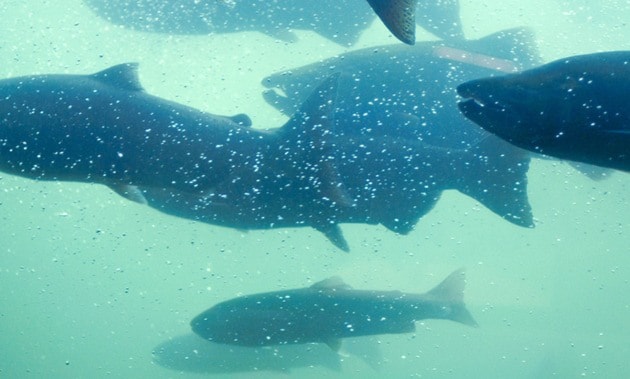Campaigners and stakeholders supporting efforts to reintroduce migrating salmon into the Canadian portion of the Columbia River say the B.C. government’s recently-released position is mixed news for the reintroduction effort.
On Mar. 13, the Government of B.C. announced their intention to continue the Columbia River Treaty (CRT) with the U.S., but seek improvements. The government outlined 14 key points of the position.
Regarding salmon, the government stated:
“Salmon migration into the Columbia River in Canada was eliminated by the Grand Coulee Dam in 1938 (26 years prior to Treaty ratification), and is currently not a Treaty issue. British Columbia’s perspective is that the management of anadromous salmon population is the responsibility of the Government of Canada and that restoration of fish passage and habitat, if feasible, should be the responsibility of each country regarding their perspective infrastructure.”
Deb Kozak is chairperson of the Columbia River Treaty Local Governments’ Committee, which led community consultation on the CRT in Columbia River Communities.
While the B.C. position seeks to extricate the salmon issue from the CRT, the wording leaves the door open for future study and cooperation, Kozak said.
“Just the simple fact that we have brought this issue forward in a broad fashion about the CRT is good, because this is something that hasn’t been on the radar for many, many years,” Kozak said.
She emphasized that stakeholders on both sides of the border are pushing to include ecosystem-based management principles into ongoing treaty negotiations, something that wasn’t a core principle when the original treaty was ratified. Salmon are a key constituent of the Columbia River ecosystem.
“We were definitely interested in learning more about [salmon reintroduction] and we would like to see that happen.” Kozak said, “There is economic benefit to strong ecosystems.”
The Ktunaxa Nation, which is centred in the East Kootenay, is a key proponent of salmon reintroduction to the Columbia headwaters.
Ktunaxa Nation Council Chair Kathryn Teneese applauded cooperation between the B.C. Government and the Ktunaxa on CRT negotiations in a Mar. 18 statement. “It is a testament to the hard work of both governments we were able to come to such a broad agreement on how we will work together towards the renewal of the Columbia River Treaty.”
However, she said consensus was not reached on some issues, of which salmon reintroduction is a key one:
“We have sharply divergent views on whether the restoration of upper Columbia salmon is a matter that should be addressed within a renegotiated Columbia River Treaty. Our view is that salmon restoration is largely about the management of dams which currently block fish passage and the management of river flows on both sides of the border and both of these management issues are at the heart of the Columbia River Treaty,” Teneese said.
“This transboundary cooperation is essential if we are to restore upriver salmon.”
In both the U.S. and Canada, local and regional stakeholders have outlined their positions. It will be up to federal entities in both countries to determine their position.
